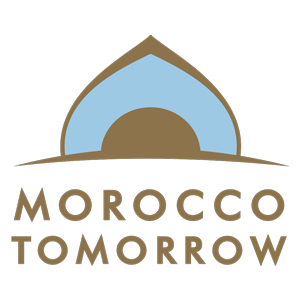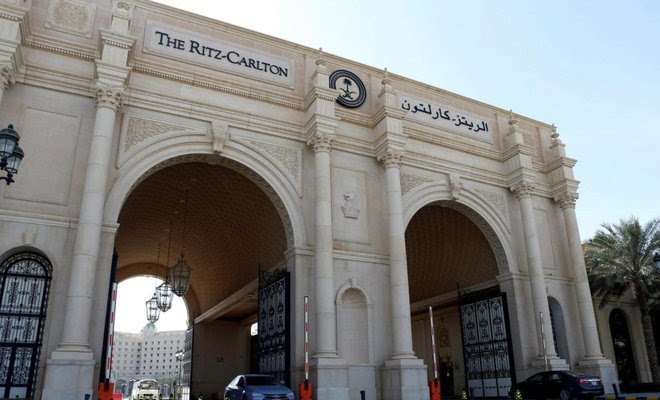Not your average syllabus week.

“Not I, nor anyone else can travel that road for you. You must travel it by yourself. It is not far. It is within reach. Perhaps you have been on it since you were born, and did not know. Perhaps it is everywhere– on water and land.” -Walt Whitman, Leaves of Grass
Welcome week in America is synonymous with getting acquainted to new experiences, places and people. Welcome week in Morocco is generally the same.
That is, if you consider bargaining in Arabic, figuring out a tram system and moving in with a family that likely speaks mostly Darija (a little French and English if you’re lucky) on the same level. Certain elements are universal: safety and health lectures, overview of the program ahead and the constant conversation, “Where are you from? What do you study?” to get to know the faces you’ll be spending three months with. But the experiential aspects have been a bit more challenging than getting reacquainted with local college bars. We started off the week with an introduction to our school, the Center for Cross Cultural Learning (CCCL) and its annexes. Our main school, where we eat lunches and take Arabic, is a 19th century riad (house in the medina). I though moving from Roseville’s drab interior to Loyola’s lush campus was an upgrade, but stepping into the CCCL is like stepping onto a movie set. You enter a giant brass door and into a tiled entryway. Walk past an iron gate and to your left is a giant three-story atrium flooded with light from the ceiling windows. The walls are covered in intricately detailed tiles, the railings are all curled brass and the lights are hanging lanterns. Each floor has several rooms that surround the balcony; each with patterned tiling on the floors and walls, with small windows that open into the central atrium and medina outside. My favorite part is the rooftop terrace, as I mentioned in my last post. You really can’t beat 360-degree views of any city, let alone one as beautiful as Rabat. We also have an annex with a library elsewhere in the medina, and another annex outside the medina for the other two SIT Morocco programs’ Arabic classes. After our activities each day, we wandered about Rabat on foot, taking in the ocean, the Kasbah and local restaurants. The first day, four of us wandered to the beach through the Kasbah. The Kasbah is the older part of a city, and is set up similarly to the medina with twisting streets where small shops line the main drags and quiet neighborhoods extend in every which way. Rabat’s Kasbah, called Oudaya, is regarded as one of the most beautiful in North Africa. It is located directly on the Atlantic Ocean and is painted a cerulean blue and white throughout. It is a bit lusher than the medina, with trees and vines cascading from upper landings and along street corners. The entrance from the Kasbah to the ocean is breathtaking. You exit an arched gate to a sweeping, most-likely thousand+ year old terrace, overlooking the beaches, ocean and river. After gaping at the views for a bit, my fellow students and I wandered down to the beach and out onto a long pier. The beach was largely male dominated (as most of Morocco is), and though I was with two male friends, I felt a bit conspicuous as an American woman. Despite this, it was a pleasant walk with amazing views. On our way back, we found a few other friends from our program. Though Rabat is a big city, it is amazing how small it can be when you are looking for other people! On our way back to our hotel, we wandered back into the Kasbah in search for a café my friend had visited a few days earlier. After a couple wrong turns and dead ends, we made it to this picturesque café atop a cliff overlooking a harbor. We had mint tea (absolutely delicious), my friend got henna and we discussed our experiences thus far. I am very happy with all the people in my program. We only have 12 students, everyone comes from very different backgrounds but we all came here because we wanted the same thing: a change from the usual routine, the challenge of taking on an unfamiliar culture and language and a passion for storytelling in one way or another. On Tuesday, however, came the first major challenge: the drop off. This is exactly as it sounds: they drop you off somewhere in Rabat with 20 dirhams (approx.. $2.50), a topic to observe and tell you to make it back to the CCCL in an hour and a half. Intimidating? Yes. Difficult in reality? No. I was dropped off with two other girls and we ended up taking the tram back to the medina after wandering around our area (which included the national library and Mohamed V University). The Rabat tram is less than a year old and is very similar to the light rail. It is clean, easy to use and cheap: one ride is 6 dirhams ($.75 USD). They also have a bus system, but I have not looked into that yet. I believe the public transportation is limited to the city area: there doesn’t seem to be much transport to the suburbs outside of driving or taxis. I am hoping to look into how the recent arrival of the tram is affecting transportation and access to different parts of the city, as well as traffic (which is crazy as it is). That night we decided to go out to explore some of the nightlife of Rabat. Though Moroccan women almost universally do not drink, it is a bit more acceptable for western women, but it is seen as very shameful (not to mention unsafe) to be drunk on the street. The guys of the program decided to have a “guy’s night” and went to a local bar that doesn’t allow women. We met up with them later and tried to go to the bar across the street from us (which was a happenin’ joint the night before with karaoke blaring until 2 a.m.) but they didn’t allow shorts. We wandered for a bit, and eventually got directions to a very nice hotel bar where we stayed until about midnight. The drinks were moderately priced ($5 for a big mug of beer), and the atmosphere was much more accepting of women, but also upscale. As a woman, I don’t think drinking is going to be a big part of my experience here. Fine by me, but certainly a different vibe than college in America. On Wednesday, Badr (our program assistant) gave an introduction to bargaining. Bargaining is part of a culture here in the medina, and if there isn’t a fixed price on something, it is expected that you barter for the price. As a born-and-raised Midwesterner, this goes against essentially everything we are: aggressive, bold and blunt. They throw out a price, you counter, if they say no, you walk away, if all goes right, they call you back and the bartering continues until you get the price you want. Oh, and this is best done in Arabic. These shopkeepers are professionals as well: they know how to act, what to say and often up to nine languages to ensure they can make a profit no matter the ethnicity of their customer. The next day we were sent out on our own with 10 dirhams to give the bartering a try. I immediately forgot the Arabic we were taught, so I decided to give it a try in French. Here is how my bartering for a ring went: Karis: “Bonjour, ca va?” Shopkeeper: “Bonjour.” Karis: “Combien cecoute?” (points at ring) Shopkeeper: “10 dirhams” (continues to speak in French I can’t follow) Karis: (Acts disinterested as taught) “Et ca?” (points at other ring) Shop keeper: “Twenty five dirhams” Karis: …… Karis: “I’ll take the one for 10 dirhams.” Clearly this is a skill I have yet to conquer. On Thursday, we had to be at the CCCL with our luggage at 8 a.m. because later in the day we moved in with our homestay families. Though we all were a little peeved at having to wake up early on our last day, especially since we drew the unlucky straw of being the first of all the groups to get picked up, it ended up being a blessing in disguise. After the hectic nature of welcome week, we had an hour to ourselves. Some people talked, others slept. I went up to the terrace to write, and Dev Dharm, a guy in my program and certified yoga instructor, led a couple people in a rooftop yoga session. It was calm, relaxed and a nice chance to center ourselves as we dove into the next chapter of our semester in Morocco: the homestay. I am writing this from my house in the medina, while my host mother does her prayers and a lilting chant in Arabic drifts from a radio. My laundry is hanging on a line upstairs and every so often a stray cat wanders onto our terrace and its meows fall past the giant cloth that functions as the roof to our courtyard and mix with the chanting and sound of cooking from the kitchen. More to come. Have a question about Rabat or Morocco? Email me atkhustad@luc.edu and I try to find an answer and post it on this blog!
This post is from the World Class blog



